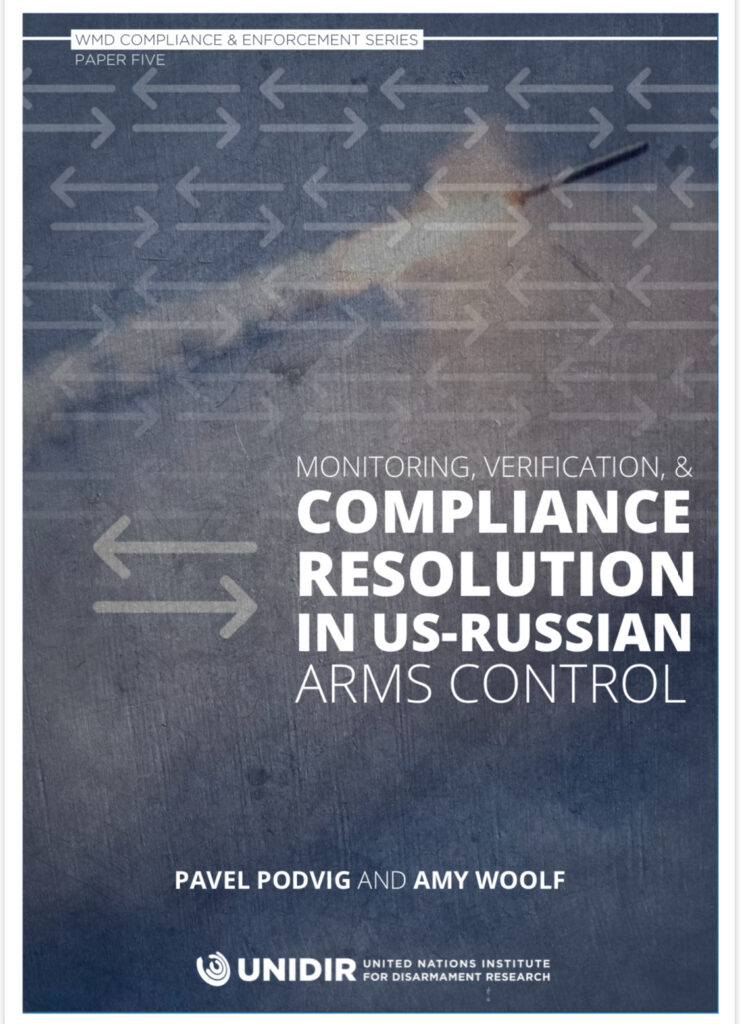In US–Soviet/Russian bilateral treaties, parties agreed to rely on their national technical means of verification—their satellites and other remote sensing technologies—and, eventually, a range of cooperative measures, such as data exchanges and on-site inspections, to monitor the forces and activities of the other party.
These treaties established consultative bodies where the two parties could meet to review implementation issues and address questions about compliance. The consultation mechanisms have allowed the parties to resolve numerous technical issues.
The experiences resolving compliance concerns under the ABM Treaty, the Strategic Arms Reduction Treaty, and the INF Treaty shows that the prospects for successfully raising and resolving these issues often turns on political, rather than technical, considerations.
Citation: Pavel Podvig and Amy F Woolf (2019) “Monitoring, Verification, and Compliance Resolution in US–Russian Arms Control.” WMDCE Series No. 5., UNIDIR, Geneva, Switzerland. https://doi.org/10.37559/WMD/19/WMDCE5
For a commentary on this paper see Stefanovich, Dmitry. 2020. “The Enduring Complexity of Compliance Disputes.”
Teaser: WMDCE series paper 5
